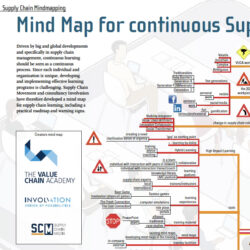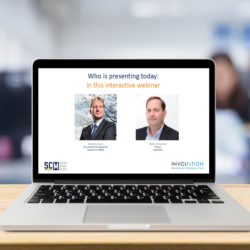Mindmap for Continuous Supply Chain Learning

Driven by big and global developments and specifically in supply chain management, continuous learning should be seen as a continuous process. Since each individual and organisation is unique, developing and implementing effective learning programs is challenging. Supply Chain Movement and consultancy firm Involvation have therefore developed a mindmap for supply chain learning, including a practical roadmap and warning signs.
Mindmap manual
The military world characterizes the present world as VUCA: volatile, uncertain, complex and ambiguous. This rapidly changing and uncertain world is forcing companies to work and learn differently. The workplace is also changing considerably due to the rise of mobile devices (smartphones, tablets, etc.), social media and the increased blending of work and private lives. Additionally, there is an important trend towards ‘gamification’: applying games not only for recreational but also for professional purposes. Finally, since the composition of the working population is changing rapidly, companies need to set high standards for training and continuous learning: plan.
Why should employees actually learn? For their own development or that of the company? The motivation and the potential blockages to learn can differ per person. For the various business functions, learning requirements vary as well. Human Resources sees education and learning as a part of the whole “life cycle” of an employee during his/her career, whereby the costs and benefits of learning are essential. Looking at learning and development from different angles is essential for developing and realising specific learning paths: do.
The design of a good learning program starts with the sharp (smArt) definition of the learning objectives, depending on the subject area and the individual preferences and learning styles. Learning methods differ in reach and intensity. Research and experience show that ‘blended learning’ has the future: seventy percent is learned in the workplace, twenty percent is learned from colleagues and ten percent of learning happens in a formal learning environment. When someone experiences and recognizes something, he/she will remember it. However, to give informal and on the job learning a chance, it will have to be supported: check.
The ultimate goal is to implement an effective and tailored learning program, in order to reach the defined learning objectives. Question is what the best learning intervention is for this? A training, a learning program, a consultancy project or coaching? For high impact learning, tools, structure and feedback are required. Involvement deserves special attention, in order to ensure that employees actually participate in the learning program. Measuring progress in the learning process ensures that the program delivers the desired results with the employees in their daily work: act.
Find more mindmaps of Supply Chain Movement here >>










